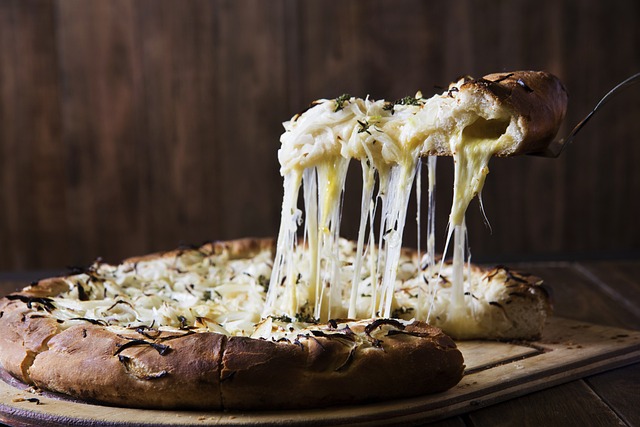Properly melting mozzarella cheese requires finesse and technique. Fresh mozzarella, with its high moisture content, can be particularly challenging to melt without turning into a watery mess. So, how do you achieve that ideal balance of gooeyness and stringiness?
To melt mozzarella cheese, choose fresh mozzarella for creaminess or low-moisture mozzarella for shape retention. Shred or grate the cheese for even melting. Opt for higher fat-content mozzarella for a smoother texture. Traditional methods like baking or broiling work well or try sous-vide for precise control.
We’ll explore different methods, from using evaporated milk to incorporating other types of cheeses for optimal results. Get ready to embark on a cheesy adventure as we unravel the secrets behind perfectly melted mozzarella cheese.
Choosing the Best Mozzarella Cheese for Melting
Fresh Mozzarella vs. Low-Moisture Mozzarella for Melting
Choosing the right variety is crucial. Two popular options are fresh mozzarella and low-moisture mozzarella, each with its own unique characteristics.
- Fresh Mozzarella: This type of mozzarella cheese has a high moisture content, making it incredibly soft and creamy. It’s typically sold in a ball or log shape and is often packed in water or brine to maintain its freshness. Fresh mozzarella melts beautifully, creating a luscious, gooey texture that’s perfect for dishes like caprese salad or homemade pizza.
- Low-Moisture Mozzarella: On the other hand, low-moisture mozzarella has less moisture compared to its fresh counterpart. It is available in various forms such as blocks, shredded cheese, or pre-sliced slices. Due to its lower moisture content, low-moisture mozzarella melts more evenly and holds its shape better when exposed to heat. This makes it an excellent choice for dishes like lasagna or baked pasta where you want the cheese to retain its form while still achieving that desirable melted consistency.
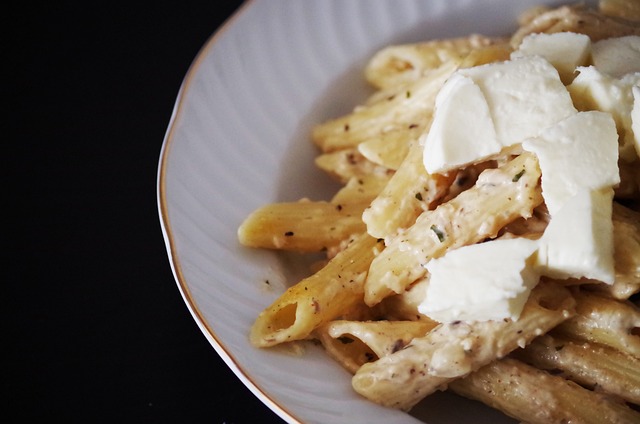
Impact of Cheese Shape and Size on Melting
The shape and size of the mozzarella cheese you choose can also impact how well it melts. Here are some factors to consider:
- Shredded Mozzarella Cheese: Shredded mozzarella is an incredibly convenient option for melting as it has already been grated into small pieces. The smaller size allows for quick and even melting, making it ideal for dishes like casseroles or grilled sandwiches.
- Mozzarella Variety: Different varieties of mozzarella may have different meltability due to variations in their composition and manufacturing processes. For example, buffalo milk mozzarella tends to have a higher moisture content, resulting in a creamier melt. Experimenting with different mozzarella varieties can add unique flavors and textures to your melted cheese creations.
- Cheese Size: The size of the mozzarella cheese you use can affect how quickly and evenly it melts. Smaller pieces or slices will melt faster than larger blocks or logs. If you’re looking for a quick and easy melt, opt for smaller portions of mozzarella.
The Basics of Melting Mozzarella
To achieve the perfect melted mozzarella cheese, you need to consider a few key factors. Let’s dive into the basics of melting mozzarella and explore temperature control and fat content that play a crucial role in achieving that ooey-gooey goodness.
Maintain Low Heat while Melting Mozzarella to Avoid Burning
Temperature control is crucial when melting mozzarella cheese. To avoid burning or scorching the cheese, it’s essential to maintain low heat throughout the melting process. Slow and steady wins the race here! By keeping the heat low, you allow the mozzarella to melt gradually without turning into a burnt mess.
| Pros | Cons |
|---|---|
| Prevents burning or scorching of mozzarella | May require more time for complete melting |
| Ensures gradual and even melting |
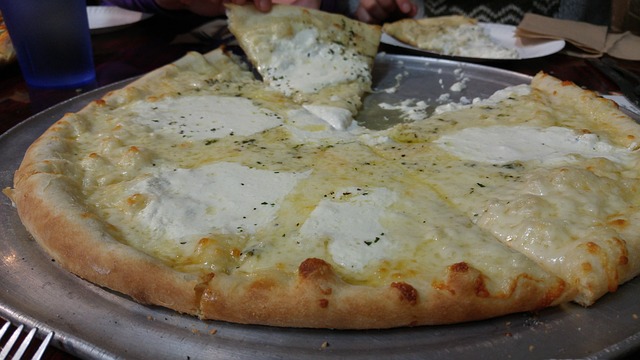
High Fat Content of Mozzarella Leads to Smooth Texture
The fat content in mozzarella plays a significant role in achieving that smooth and creamy texture when melted. Mozzarella with higher fat content tends to melt better compared to low-fat variations. The higher fat content allows for better moisture retention during melting, resulting in a luscious consistency.
| Pros | Cons |
|---|---|
| Provides a smooth and creamy texture | Higher fat content may not be suitable for those on a low-fat diet |
| Better moisture retention during melting process |
By understanding the basics of melting mozzarella, including using a non-stick pan, maintaining low heat, and considering the fat content, you can elevate your cheese-melting game to new heights. Experiment with different temperatures and techniques to find what works best for you.
Remember, melting mozzarella is an art form that requires patience and practice.
The Science Behind Mozzarella Melting
The melting of mozzarella cheese is not just a delicious sight, but it’s also an intriguing scientific process. Let’s dive into the chemistry behind this mouthwatering phenomenon and explore the factors that affect its melting point.
The Chemistry of Mozzarella Cheese Melting
Mozzarella cheese owes its stretchy, gooey texture when melted to its unique composition. It contains proteins called caseins, which are responsible for its ability to melt and stretch. When heat is applied, these casein proteins undergo a process known as denaturation.
During denaturation, the protein structure unravels and forms new bonds with water molecules present in the cheese. This causes the cheese to soften and become more pliable. As a result, mozzarella transforms from a solid state into a creamy, molten form.
Factors Affecting Melting Point
Several factors influence the melting point of mozzarella cheese:
- Temperature: The temperature at which mozzarella melts depends on various factors such as moisture content, fat content, and acidity level. Generally, mozzarella begins to melt around 130-140°F (55-60°C). However, different types of mozzarella may have slightly different melting points.
- Fat Content: Higher fat content can lower the melting point of mozzarella cheese. This is because fat acts as a lubricant between protein molecules during heating, allowing them to move more freely and facilitating faster melting.
- Moisture Content: Moisture plays a crucial role in determining how easily mozzarella melts. Excess moisture can hinder the formation of bonds between proteins and water molecules during denaturation, resulting in slower melting.
- Acidity Level: The acidity level of mozzarella affects its ability to melt smoothly. Acidic conditions can disrupt protein structures and impede proper denaturation.
Molecular Changes During the Melting Process
When mozzarella cheese melts, several molecular changes occur:
- Protein Denaturation: As mentioned earlier, the heat causes the casein proteins in mozzarella to denature, leading to a change in their structure and properties.
- Water Binding: The denatured proteins form new bonds with water molecules present in the cheese. This binding of water helps create a more fluid consistency and contributes to the stretchiness of melted mozzarella.
- Fat Emulsification: The fat content in mozzarella melts and disperses evenly throughout the cheese, contributing to its smooth texture and rich flavor.
Traditional Mozzarella Melting Techniques
Baking Mozzarella
Baking allows for even melting of mozzarella over larger surfaces.
There are several traditional techniques you can try. One popular method is baking, which involves placing your dish in the oven at a high temperature until the mozzarella melts to perfection. This works well for dishes like pizza or casseroles.
If you’re baking dishes like pizza or casseroles, allow about 10-15 minutes for the mozzarella to melt to a golden brown.
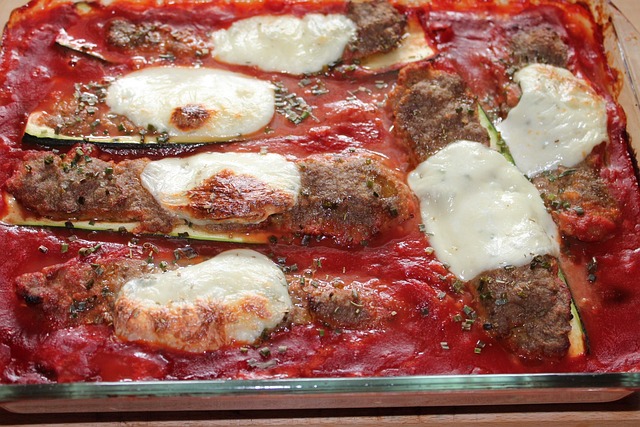
Broiling Mozzarella Cheese
Broiling creates a crispy golden crust on top of melted mozzarella.
Another option is broiling, where you place your dish under the broiler for a few minutes until the cheese turns golden and bubbly. This technique is ideal for dishes that require a quick melt on top, such as garlic bread or bruschetta.
When broiling, position the dish about 6 inches from the broiler element and broil for 2-3 minutes, or until the cheese turns golden and bubbly.
Stovetop Methods for Melting Mozzarella
Stovetop methods offer precise control over melting temperature.
If you prefer stovetop cooking, you can melt mozzarella by using a double boiler method. Simply fill a pot with water and bring it to a simmer. Place another heatproof bowl on top of the pot, making sure it doesn’t touch the water directly. Add your mozzarella to the bowl and stir until it melts smoothly.
If using a stovetop double boiler, it may take 5-10 minutes over low heat for mozzarella to achieve a smooth consistency.
Grating or Shredded Mozzarella Helps It Melt Quickly and Evenly
To achieve quick and even melting of mozzarella cheese, consider using grated or shredded varieties instead of whole slices. The smaller pieces have more surface area exposed to heat, allowing them to melt faster and more evenly.
Grated or shredded mozzarella is particularly useful when making dishes like lasagna or stuffed pasta shells. Sprinkling it between layers ensures that each bite contains perfectly melted cheese throughout.
Benefits of Grating or Shredding Mozzarella:
- Grated or shredded mozzarella melts quickly due to its increased surface area.
- Even distribution ensures consistent flavor in every bite.
- Ideal for layered dishes where uniform melting is desired.
Layering Shredded Mozzarella Between Other Ingredients
When melting mozzarella cheese, layering it between other ingredients can help facilitate the melting process. By sandwiching the mozzarella between items like sauce, meat, or vegetables, you create a barrier that traps heat and steam, aiding in the cheese’s melting.
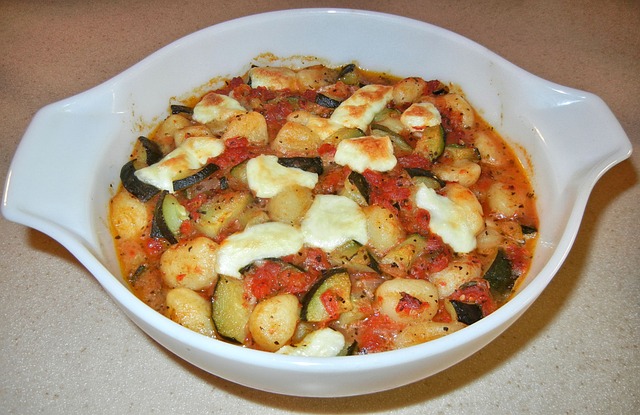
Benefits of Layering Mozzarella:
- Layering mozzarella with other ingredients enhances flavor and texture.
- Trapping heat and steam accelerate melting.
- Provides an opportunity for creative culinary combinations.
Non-Traditional Methods: Sous-Vide Melting and Blowtorching
Melting Mozzarella with Precision with Sous-Vide
If you want to achieve precise melting of mozzarella cheese, the sous-vide technique is worth considering. This method involves vacuum-sealing the cheese in a bag and immersing it in a water bath at a controlled temperature for an extended period. The low and consistent heat allows the cheese to melt evenly without overcooking or becoming rubbery.
| Pros | Cons |
|---|---|
| Precise control over melting temperature. | Requires specialized equipment like a sous-vide machine. |
| Even melting without compromising texture. | Longer cooking time compared to traditional methods. |
| Ideal for dishes that require perfectly melted mozzarella, | |
| such as pizza or lasagna. |
To melt mozzarella using the sous-vide technique, follow these steps:
- Cut the mozzarella into small pieces or shred it for faster and more even melting.
- Place the cheese in a vacuum-sealed bag, ensuring enough space to spread out evenly.
- Preheat your sous-vide machine to the desired temperature (usually around 150°F).
- Seal the bag using a vacuum sealer, removing as much air as possible.
- Submerge the sealed bag in the preheated water bath and cook for 30 minutes to an hour, depending on your desired consistency.
- Once melted, carefully remove the bag from the water bath and gently squeeze or stir the cheese before using it in your recipe.
Blowtorch Mozzarella Melting for Bruschetta and Grilled Sandwiches
Blowtorching can be an exciting way to melt mozzarella cheese if you want to add some charred flavor and visual appeal to your dishes. This method is particularly popular when making bruschetta or grilled sandwiches where you want that golden-brown crust on top of melty mozzarella.
| Pros | Cons |
|---|---|
| Quick and convenient method. | Requires caution as blowtorches can be dangerous if not used properly. |
| Adds a smoky flavor to the melted cheese. | Limited control over melting consistency. |
| Perfect for dishes that require a charred finish. |
To melt mozzarella using a blowtorch, follow these steps:
- Prepare your dish with mozzarella cheese on top, such as bruschetta or an open-faced sandwich.
- Ensure the cheese is evenly distributed and covers the desired area.
- Ignite your cooking blowtorch and adjust the flame to medium intensity.
- Hold the blowtorch about 6 inches away from the cheese and move it in a sweeping motion to melt and brown the surface.
- Be careful not to keep the flame in one spot for too long, as this can lead to burning rather than melting.
- Once you achieve your desired level of melting and browning, remove the blowtorch and let the cheese cool slightly before serving.
Use all necessary precautions when handling a blow torch for cooking. Wear appropriate protective gear, maintain a secure grip on the handle, and always point the flame away from yourself, other people, and flammable materials.
Remember, when using non-traditional methods like sous-vide or blowtorching to melt mozzarella cheese, always exercise caution and follow proper safety guidelines. These techniques offer unique ways to achieve specific results, whether it’s precise melting or adding a touch of charred flavor. Experiment with different methods based on your preferences and culinary goals!
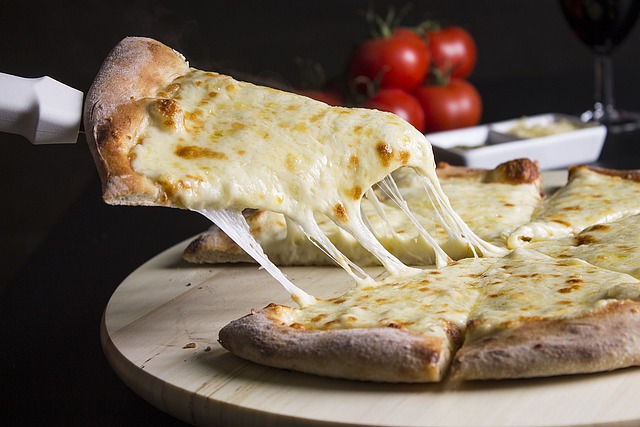
Troubleshooting: Why Mozzarella Cheese Isn’t Melting Smoothly
Avoiding Cheese Clumping and Separation When Melting Mozzarella
Achieving a smooth texture and consistency can sometimes be a challenge. One common issue is the cheese clumping or separating during the melting process. To avoid this, there are a few key steps you can take:
- Grate the cheese: Start by grating your mozzarella cheese before melting it. This helps to create smaller, more manageable pieces that will melt more evenly.
- Use low-moisture mozzarella: Opt for low-moisture mozzarella when melting it. High moisture content can release excess liquid, causing clumping and separation.
- Add some cornstarch: Another trick to prevent clumping is tossing the grated mozzarella with a small amount before melting it. The cornstarch is a barrier between the cheese proteins, preventing them from sticking together.
- Melt slowly over low heat: It’s important to do so slowly over low heat when heating your mozzarella. This allows the cheese to melt gradually and evenly without overheating or burning.
Overheating Can Cause Mozzarella to Become Rubbery or Stringy
Overheating is another common culprit behind rubbery or stringy melted mozzarella cheese. To avoid this issue and achieve a smooth melt, keep the following tips in mind:
- Monitor the temperature: Keep an eye on the temperature while melting your mozzarella cheese. Overheating can cause the proteins in the cheese to break down excessively, resulting in a rubbery texture or stringiness.
- Use gentle heat: Opt for gentle heat rather than high temperatures when melting your mozzarella. Slow and steady wins the race here!
- Consider using indirect heat: If you’re melting mozzarella as part of a recipe, consider using indirect heat methods like baking or broiling. This allows for more even heating and reduces the risk of overheating.
Preventing Burnt or Overcooked Cheese
Nobody likes burnt or overcooked cheese, so here are some tips to ensure your melted mozzarella comes out perfectly:
- Watch the cooking time: Pay close attention to the cooking time when melting mozzarella cheese. It can melt quickly, so be vigilant to avoid burning it.
- Cover with foil: If you’re melting mozzarella on top of a dish in the oven, consider covering it loosely. This helps to prevent direct heat from reaching the cheese and causing it to burn.
- Add other ingredients: Incorporating other ingredients into your dish can help protect the mozzarella from burning. For example, layering it between other ingredients like sauce or vegetables provides an additional buffer against direct heat.
By following these troubleshooting tips, you’ll be well on your way to achieving smooth and perfectly melted mozzarella cheese every time!
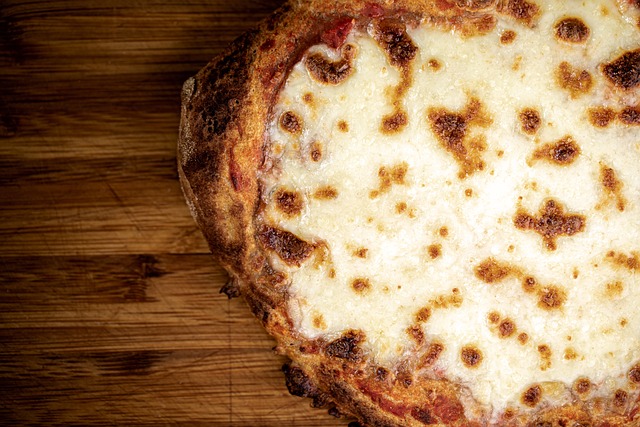
Creative Melted Mozzarella Culinary Applications
Melted Mozzarella on Burgers and Sandwiches
Who doesn’t love a juicy burger or a delicious sandwich? Adding melted mozzarella takes these classics to a whole new level.
Whether you’re grilling beef patties or stacking layers of deli meats, melting fresh mozzarella on top creates a gooey, cheesy goodness that will make your taste buds dance with joy.
Simply place slices of mozzarella on your cooked patty or between the bread slices of your sandwich and let it melt under the broiler or in a hot oven for a few minutes. The result? A mouthwatering delight that will have you coming back for seconds.
Sprinkle Mozzarella Over Roast Vegetables
Roasting vegetables brings out their natural sweetness and enhances their flavors. Why not take it up by melting mozzarella over them?
After roasting your favorite veggies like zucchini, bell peppers, and eggplant, transfer them to an oven-safe dish and sprinkle generous amounts of fresh mozzarella.
Pop the dish back into the oven until the cheese is melty and golden brown. Combining caramelized vegetables and oozy mozzarella creates a heavenly side dish that pairs well with any main course.
Mozzarella Topped Baked Potatoes
Baked potatoes are already comforting and satisfying, but when you add melted mozzarella to the mix, they become irresistible. Start by baking your potatoes until they’re tender with crispy skins on the outside. Then, carefully slice open each potato lengthwise and fluff up the insides with a fork.
Place slices or shreds of fresh mozzarella on top of each potato half before returning them to the oven for another few minutes until the cheese is beautifully melted. The result is a creamy, cheesy indulgence that will make you forget about any other toppings.
Mozzarella cheese is incredibly versatile and can be used in various dishes. Whether you’re making pizzas, lasagna, bread, pasta, or even just snacking on cheese curds, melting mozzarella adds that extra touch of deliciousness. Always use an oven-safe bowl or dish when melting mozzarella to ensure it heats evenly without any safety concerns.
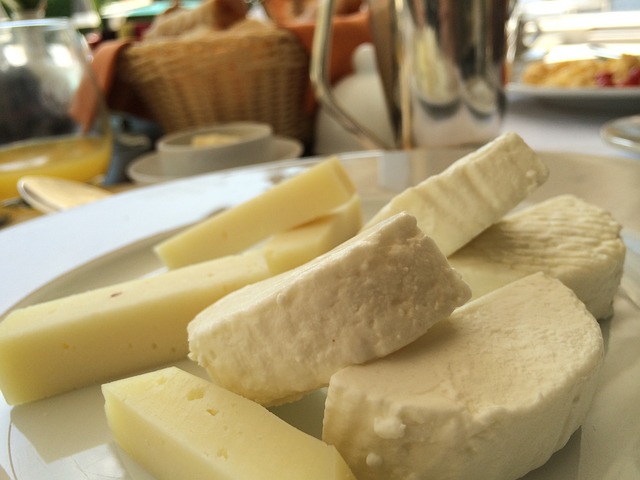
Conclusion
Armed with the knowledge of choosing the best mozzarella cheese, understanding the science behind melting, and mastering both traditional and non-traditional techniques, you’re ready to create mouthwatering melted mozzarella dishes that will impress everyone at your table.
But don’t stop here! Experiment with different culinary applications for melted mozzarella. From gooey pizza toppings to creamy pasta sauces, the possibilities are endless. So go ahead, unleash your creativity in the kitchen, and let the melty magic begin!
Frequently Asked Questions (FAQs)
Can I use any type of mozzarella cheese for melting?
While most types of mozzarella cheese can be melted, choosing a variety with a higher fat content is best for optimal results. Fresh mozzarella or low-moisture whole milk mozzarella work well due to their higher fat content.
Why isn’t my mozzarella cheese melting smoothly?
If your mozzarella isn’t melting smoothly, it could be due to excess moisture. Make sure to pat dry fresh mozzarella before using it for melting. Check if your temperature is too high or if you’re using low-fat mozzarella which may not melt as smoothly.
Can I use a blowtorch to melt mozzarella?
Using a blowtorch can be an exciting way to melt mozzarella quickly and achieve that perfect golden-brown crust on dishes like bruschetta or gratins. Just ensure you handle the blowtorch safely and follow all necessary precautions.
What is sous-vide melting?
Sous-vide is a cooking technique that involves sealing food in an airtight bag and cooking it in a water bath at precise temperatures. Sous-vide can be used to melt mozzarella slowly and evenly without overcooking or burning it.
How long does it take for mozzarella cheese to melt?
The time it takes for mozzarella cheese to melt can vary depending on factors such as the thickness of the cheese, the cooking temperature, and the melting method used. On average, mozzarella takes about 5-7 minutes to melt in a preheated oven at 400°F (200°C). Adjust your cooking time accordingly based on these variables.

